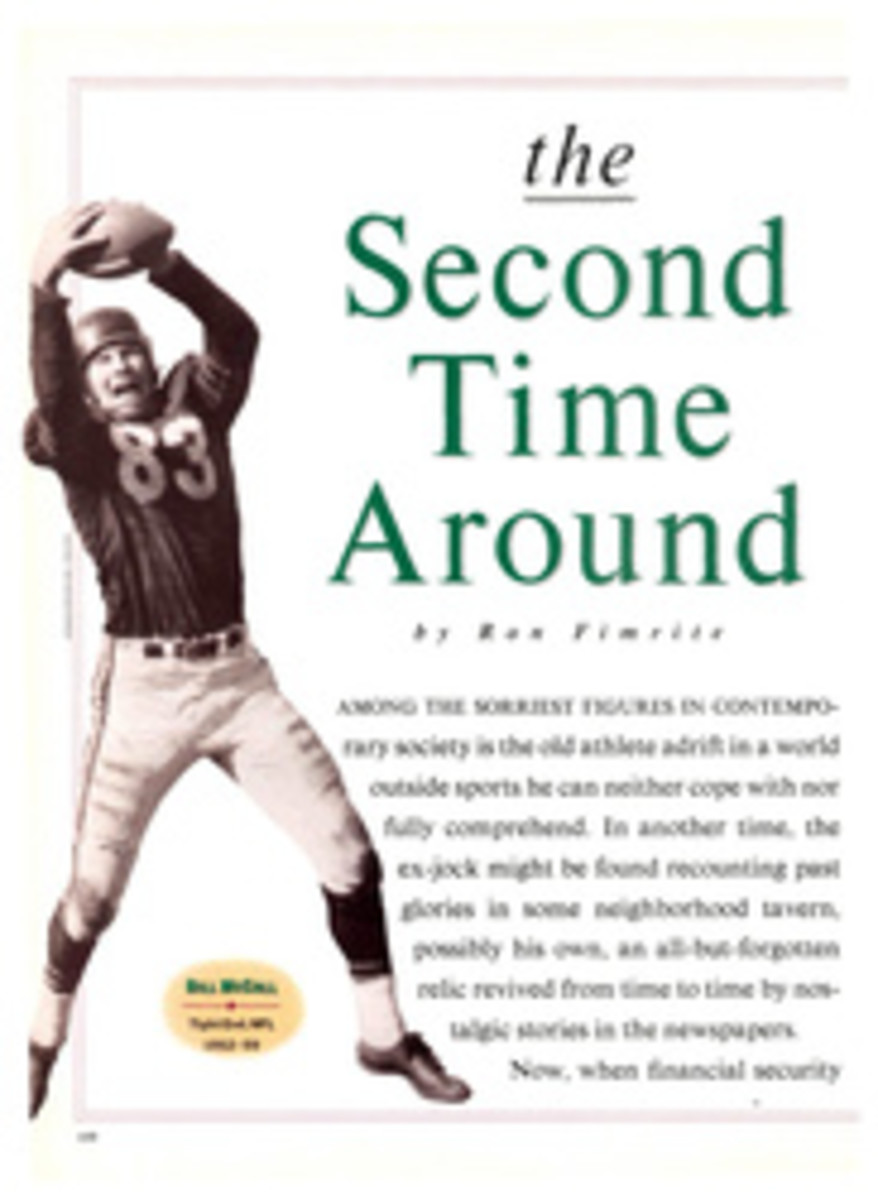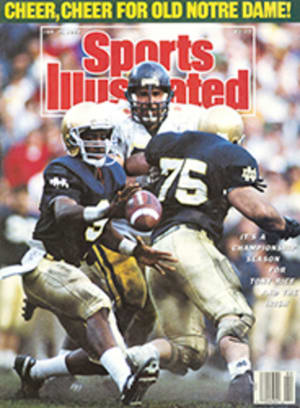
SCORECARD
TWO NOMINEES
"I'm proud to reach directly into the conservation community to find someone to lead this agency," said President-elect Bush as he nominated William K. Reilly to head the Environmental Protection Agency, one of the two most important environmental jobs in his new administration. Bush has reason to be proud of choosing Reilly, who was recommended by two of Bush's friends, William Ruckelshaus and Russell Train, both of whom are former EPA administrators and respected environmentalists. Reilly, 48, who has an undergraduate degree from Yale, a law degree from Harvard and a master's degree in urban planning from Columbia, has a broad knowledge of ecological issues. He's president of the Conservation Foundation, which does research into such environmental threats as toxic waste and ozone depletion. He also heads the U.S. chapter of the World Wildlife Fund, which seeks to protect endangered species and their habitats. In the early '70s he was a senior staff member on the Council on Environmental Quality, where he concentrated on land-use research. Some environmentalists question whether Reilly, with his background in research rather than in advocacy, has the toughness needed to enforce antipollution laws, but most approve of the nomination and hope that Reilly will find new remedies for ecological ills. "A truly outstanding selection," says outgoing EPA chief Lee Thomas, an able administrator who was kept on a short leash by the Reagan Administration.
By contrast, Bush's nominee for the second key environmental post, Secretary of the Interior, is New Mexico Republican Congressman Manuel Lujan Jr., who has evinced little concern for conservation during his 20 years in the House. Jim Maddy, executive director of the League of Conservation Voters, describes Lujan's voting record as "weak and getting weaker"; in the last Congress, Lujan voted with environmentalists a mere 13% of the time. Moreover, last year Lujan cosponsored a bill, which died in committee, that would have opened Alaska's North Slope to oil exploration.
Although Lujan has the support of western development interests and the American Petroleum Institute, he isn't considered a James Watt-style anti-environment ideologue. When Watt headed the Interior Department, Lujan, then the ranking Republican on the House Interior Committee, opposed an effort by Watt to open public lands to oil and gas exploration. He professes a fondness for the national parks, which suffer from neglect, and in accepting his nomination he said, "If one little piece of our public trust is desecrated, we all suffer."
Bush has said, "I am an environmentalist," and Reilly's nomination appears to be consistent with that stance. But stronger evidence of environmental consciousness on Lujan's part is needed if Bush is to live up to his claim.
SHE'S CRISSIE BLAKE TO US
The six singles players on the women's tennis team at East Stroudsburg (Pa.) University are Christy Daddona, Krista Hritz, Kristin Lowry, Kristy Jones, Chris Snell and Cheryl Blake.
AWAY FOR THE HOLIDAYS
During the yuletide, the basketball team from Pittsfield Central Institute, a high school in Pittsfield, Maine, played in the Kingdom of the Sun Holiday Classic in Ocala, Fla., as did schoolboy teams from New York, Ohio, Tennessee, Arkansas, Alabama, Pennsylvania—and, oh, yes, Florida. Meanwhile, South Miami (Fla.) High was off at the Las Vegas Holiday Prep Classic, where the field included teams from California, Kentucky, Ohio, Louisiana, Washington, New York, the District of Columbia and, er, Nevada. The week before Christmas, St. Anthony's High of Jersey City, N.J., joined teams from Louisiana, South Carolina, New York, Ontario and, yes, Florida in the Great Florida Shootout in Kissimmee. Then, between Christmas and New Year's, St. Anthony's played in the King Cotton Classic in Pine Bluff, Ark., against teams from Virginia, Tennessee, California, Ohio, Kentucky, Louisiana and, ah, Arkansas.
Clearly, there's a boom in high school holiday basketball tournaments, with more than a dozen major events now crowding the schoolboy calendar. What makes a tournament "major" is not just that teams cross time zones to play in it, but also that these teams are among the very best. Thanks to the advent of high school rankings—most notably, the weekly compilation in USA Today—high school basketball has gone national, with everyone gunning for No. 1.
The tournaments foster and capitalize on this growing intersectional competitiveness. St. Anthony's has been USA Today's No. 1-ranked team every week this season; the Friars didn't hurt their standing by beating No. 5 Miami Senior 68-55 in the final of the Florida Shootout and No. 2 Flint Hill Prep of Oakton, Va., 64-45 for the King Cotton title. A blue-chip team like St. Anthony's is avidly courted by the tournaments. It receives invitations more than a year in advance, its air fare and lodging are covered, and its players are entertained with banquets and sightseeing outings.
Tournament directors are turning to corporate sponsors to underwrite their increasingly splendiferous events, hence the McDonald's Classic in Honolulu, the Dr Pepper Classic in Dallas and the Arby's Classic in Bristol, Tenn. Some competitions have even found the holy grail: TV money. ESPN paid $3,000 to televise the 1987 King Cotton, and most tournaments have local TV deals.
As the tournaments have become more glamorous, worries about them have grown. Nine of USA Today's top 25 teams are private schools, most of which are freer to engage in recruiting than public schools are. With national rankings and tournaments in exotic locales putting a higher premium on winning, the temptation for schools to go ever farther afield to get players—and to pay them—is that much greater.
Another danger is articulated by Travis Creed, founder of the King Cotton Classic, which is staged by a nonprofit club. Creed worries that tournament promoters might be tempted to entice top-ranked teams by giving under-the-table payments to coaches and to school administrators. "The concern I have is that we'll see the same corruption that we have in college basketball," he says.
THE TALL MEN'S BIKE SHOP
Golden State Warrior center Ralph Sampson had arthroscopic surgery on his left knee last week and will be off the court for perhaps four weeks. He'll be off his new bike for a while too.
That's too bad, for it's a bike the 7'4" Sampson dreamed of. He has always enjoyed riding but never felt comfortable on a standard-sized cycle. So last summer, while he was home in Virginia, he took his problem to Craig Mauck of AAA Rearview Bicycle Repair in Harrisonburg. Mauck agreed to build him a bike. He used custom-made gears and constructed a huge frame. He fashioned pedals that would accommodate Sampson's size-17 feet. When he finished "the world's largest mountain bike," as Mauck calls his creation, the cost had reached Sampsonesque proportions—$3,000.
Mauck says the cycle will be perfect for a large athlete on the rebound: "It will definitely help with Sampson's rehab. People his size—their knees take a pounding. For a big man, a bike like this, which won't put stress on those knees, is much better than, say, running." Mauck plans to hit all 25 NBA teams with that sales pitch.
CLARITY AT LAST
When the NCAA convenes in San Francisco next week it will almost certainly approve the adoption of a revised and improved rule book. The new NCAA Manual is cleaner than its predecessor, if not leaner. With the introduction of graphics and the use of larger type, the new book is actually bigger than the old one. That manual was so disorganized and imprecisely worded that athletic administrators either couldn't find the rules they were looking for or couldn't understand what the rules meant when they found them. "We simplified some strange language," says outgoing NCAA president Wilford S. Bailey, who chaired a five-person team that rewrote the book. "One financial-aid interpretation was explained in a single 180-word sentence. Now it's broken into I can't remember how many paragraphs." The new user-friendly manual is clear in both prose and presentation. It even has flow charts explaining how an athlete goes from crime to punishment.
Bailey expects the revisions to lead to further streamlining of the rule book. "The members will operate for a while with these simpler rules, and they'll be able to determine whether we need them all," he says. "I bet they'll drop some at future conventions."
ONE MAN'S CHARITY
Bengals coach Sam Wyche stays at a downtown Cincinnati hotel on the night before a home game so he can concentrate on the task at hand. He gets up early on game day and takes a drive through the city. Cincy is quiet at that hour, the streets are nearly empty—except for the homeless. "An idea came to me," Wyche says. "Why don't I see if I can capitalize on the excitement of the year?" So during the off-season Wyche, whose Bengals kept the excitement alive with a 21-13 win over Seattle on Saturday (page 49), will be offering himself for public-speaking engagements at $5,000 an appearance. All proceeds will go to benefit Cincinnati's homeless.
TWO PHOTOS
CYNTHIA JOHNSON/TIME
Reilly (left) has strong conservationist credentials that Lujan lacks.
ILLUSTRATION
PATRICK MCDONNELL
THEY SAID IT
•Hector Camacho, who's returning to the ring after a 22-month hiatus: "I can happily say I've made a 100-degree turn in my life."
•Greg Haugen, anticipating his lightweight bout against Pernell (Sweet Pea) Whitaker: "When I get done with Sweet Pea, he'll be Split Pea."

